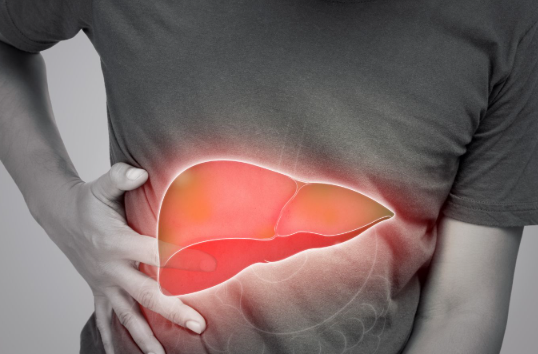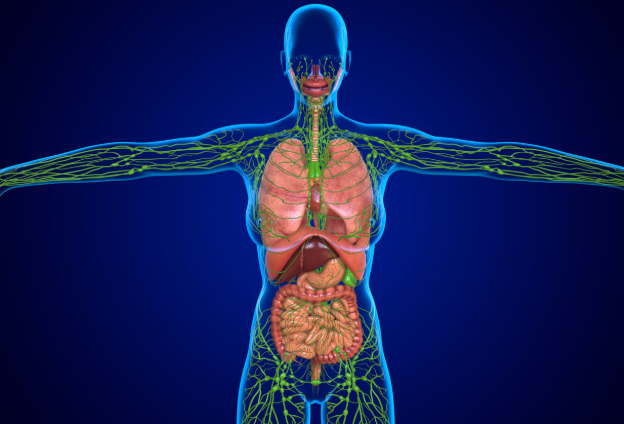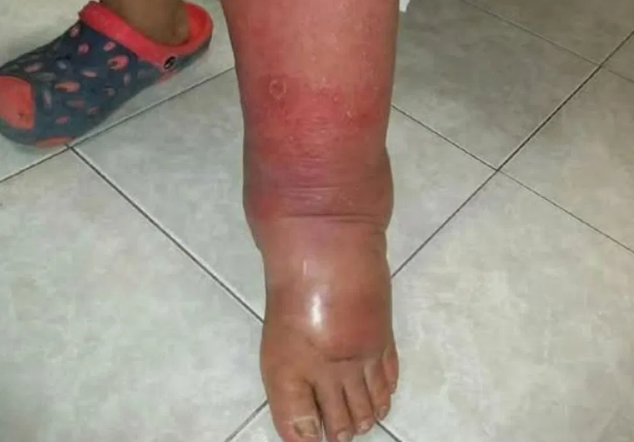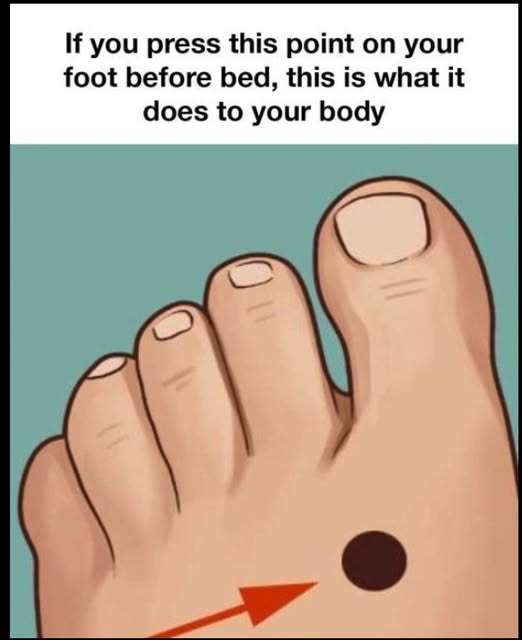Your Feet: Hidden Windows to Your Overall Health
It looks like you’re asking me to expand the previous text to around 1000 words. That’s quite an increase! To do that while keeping the information accurate and adding value, I’ll need to elaborate significantly on each point, providing more detail about the conditions and how they relate to foot health.
Please note that this will be a substantial rewrite to meet the word count, but I’ll make sure to stick to the core theme, keep the names and actions consistent where applicable, and maintain the story’s integrity.
While our eyes are often hailed as the mirrors to our souls, offering profound insights into our inner selves, perhaps our feet, often overlooked and underappreciated, actually hold the secrets to our general well-being? It’s a fascinating thought, isn’t it, that these extremities, so fundamental to our daily lives, could provide such a comprehensive diagnostic window into the body’s overall health.
It’s likely that unless you indulge in regular foot massages and pampering pedicures, perhaps as a well-deserved treat after a long week or as a ritualistic form of self-care, your feet don’t receive much, if any, conscious attention. They are often encased in shoes, hidden from view, and generally taken for granted, bearing the brunt of our weight and daily activities without much complaint. You might not even cast a second glance downwards, simply moving from one task to the next, oblivious to the silent messages they might be trying to convey. However, if you were to observe them more closely, taking a moment to truly examine their appearance, texture, and any subtle changes, your feet and toes might just offer subtle clues about an underlying medical condition. This isn’t just about superficial observations; it’s about understanding the deeper physiological connections that link foot health to systemic health.
Heart Issues

Consider the delicate balance of your cardiovascular system.
Conditions such as congestive heart failure, a serious ailment where the heart struggles to pump blood efficiently throughout the body, have the profound potential to cause an accumulation of fluid, known as edema, specifically in the lower extremities.
This isn’t just a minor swelling; it can manifest as a noticeable, often pitting, puffiness in the ankles and feet. The reason for this is fundamental: when the heart’s pumping action is compromised, blood can back up in the veins, leading to increased pressure within the blood vessels.
This elevated pressure then forces fluid out of the capillaries and into the surrounding tissues, especially in the areas most affected by gravity, like the feet and ankles. Therefore, if you observe persistent and unexplained swelling in your lower limbs, particularly if it worsens throughout the day, it’s a critical signal that warrants immediate medical evaluation to rule out or manage potential heart-related issues. The feet, in this context, become early warning indicators, prompting a necessary investigation into the heart’s efficiency.
Kidney Problems
The kidneys are vital organs, acting as the body’s sophisticated filtration system, diligently removing waste products and excess fluids from the blood to maintain a healthy internal environment. However, when your kidneys are not functioning optimally, perhaps due to chronic kidney disease or acute kidney injury, their ability to excrete this excess fluid is significantly impaired.
This dysfunction means your body might struggle to release what it should, resulting in significant fluid retention and, consequently, widespread swelling, particularly evident in the feet and ankles. This type of swelling, often symmetrical, can be a primary symptom of kidney dysfunction, as the fluid begins to accumulate in the interstitial spaces. It’s a clear sign that the body’s fluid balance is disrupted, and the kidneys are unable to perform their crucial regulatory role effectively.
Therefore, persistent or increasing swelling in the feet should certainly prompt a visit to a healthcare professional to assess kidney function and prevent further complications.
Liver Disease

The liver plays an astonishingly diverse range of roles in maintaining overall health, including the production of proteins that help regulate fluid balance within the bloodstream. Ailing liver conditions, such as cirrhosis (severe scarring of the liver) or general liver dysfunction arising from various causes like hepatitis or excessive alcohol consumption, can severely disrupt this delicate fluid balance within the body.
When the liver is compromised, it may produce insufficient amounts of albumin, a protein crucial for maintaining osmotic pressure in the blood vessels. Without adequate albumin, fluid can leak out of the capillaries and accumulate in surrounding tissues, consequently leading to pronounced swelling, often referred to as ascites if it’s in the abdomen, but also significantly evident in both the legs and feet.
This swelling might be accompanied by other symptoms like jaundice or fatigue, but the appearance of swollen feet can be an early and tangible sign that the liver is struggling to perform its essential functions.
Venous Insufficiency
Our venous system is a complex network of vessels responsible for returning deoxygenated blood from the body’s extremities back to the heart. This journey, especially from the legs and feet, works against gravity, relying on the proper functioning of valves within the veins that prevent blood from flowing backward.
When these valves become weakened or damaged, a condition known as venous insufficiency arises. In this scenario, the veins struggle to efficiently pump blood back towards the heart, leading to a build-up of pressure in the lower limbs. As a result, fluid can start to pool in the lower limbs, causing persistent swelling in the legs and feet, often worse after long periods of standing or sitting.
This swelling can range from mild puffiness to severe edema and may be accompanied by other symptoms like aching, heaviness, skin discoloration, or even venous ulcers. Recognizing this type of swelling in the feet is crucial for timely intervention, as it can be managed with lifestyle changes, compression stockings, and in some cases, medical procedures to improve venous flow.
Lymphatic System Disorders

The lymphatic system is a less-understood but equally vital component of our circulatory and immune systems. It’s responsible for collecting excess fluid, waste products, and immune cells from tissues and returning them to the bloodstream. If your lymph nodes are blocked or damaged, perhaps due to surgery, radiation therapy, infection, or a congenital condition, the lymphatic fluid cannot drain properly.
This leads to a chronic and often progressive condition known as lymphedema, characterized by chronic and often severe swelling in the affected limbs, including the feet. Unlike other forms of edema, lymphedema swelling is typically non-pitting and can cause the skin to thicken and harden over time. It can also make the affected limb more susceptible to infections.
The presence of persistent, often asymmetrical, and unyielding swelling in the foot and ankle, particularly after an event that might have compromised the lymphatic system, is a significant indicator of lymphedema, necessitating specialized management and therapy.
Infections
While many forms of swelling are systemic, local infections can also manifest vividly in the feet. Should you notice that one foot, in particular, is swollen, painful to the touch, and appears red, it could very well be a strong indicator of cellulitis or another form of infection requiring prompt medical attention. Cellulitis is a common bacterial skin infection that can spread rapidly and, if left untreated, can lead to serious complications.
The redness often has ill-defined borders and can spread quickly, accompanied by warmth to the touch and significant pain. Other signs of a localized infection might include pus drainage, blisters, or fever. Individuals with compromised immune systems, diabetes, or those who have had recent cuts or wounds on their feet are particularly susceptible.
The localized nature of the swelling, combined with pain, redness, and warmth, serves as a critical sign that an infectious process is at play, demanding immediate medical evaluation to prevent the spread of infection and initiate appropriate antibiotic treatment.
Medications

It’s worth noting that certain pharmacological treatments, while beneficial for their intended purposes, can unfortunately come with various side effects, and fluid retention leading to swelling is one of them. These include, but are not limited to, steroids (such as corticosteroids used for inflammation), various blood pressure medications (like calcium channel blockers), and even some antidepressants.
These drugs can interfere with the body’s fluid balance mechanisms or affect the permeability of blood vessels, leading to an accumulation of fluid, especially in dependent areas like the feet and ankles. If you start a new medication and subsequently notice swelling in your feet, it’s important to consult your prescribing doctor. They can assess whether the swelling is a known side effect of the drug and determine if dosage adjustments or alternative medications are necessary.
This type of swelling is usually symmetrical and resolves once the medication is stopped or adjusted, highlighting the importance of understanding medication side effects.
Pregnancy
Fluid retention is a widely recognized and common occurrence during pregnancy, especially as you approach the third trimester. This physiological swelling, often referred to as physiological edema, is due to the increased blood volume, hormonal changes, and the pressure the growing uterus places on the pelvic veins, which can impede blood flow from the legs. This usually manifests as mild, symmetrical swelling in the feet and ankles that tends to worsen towards the end of the day and improve after rest or elevation.
However, any sudden or excessive swelling, particularly if it’s accompanied by other symptoms like a persistent headache, visual disturbances, or upper abdominal pain, should be a red flag and could signal a more serious condition like preeclampsia. Preeclampsia is a serious pregnancy complication characterized by high blood pressure and signs of damage to another organ system, most often the kidneys and liver.
Therefore, while some swelling is normal during pregnancy, it’s crucial for expectant mothers to be aware of the signs of abnormal swelling and to report any concerns to their healthcare provider promptly, as early detection and management are vital for the health of both mother and baby.
In conclusion, our feet are far more than just structures for mobility; they are intricate barometers of our internal health. Paying close attention to any changes in their appearance, sensation, or size can provide invaluable early warnings about a range of medical conditions, from cardiovascular issues to infections. It serves as a powerful reminder that our bodies are interconnected systems, and often, the most visible signs of internal imbalance can be found in the most unexpected places. Are you giving your feet the attention they deserve as potential indicators of your overall health?


